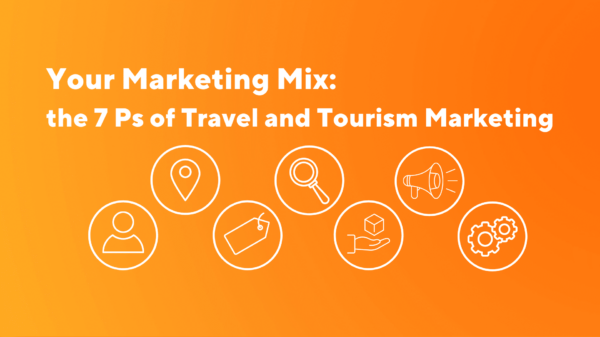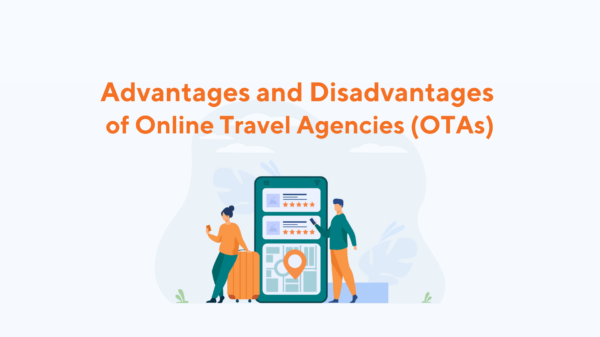Chatbots are generating a lot of excitement in the travel industry, but are they right for your tour and activities company? Before you invest time and money into this tech trend, be sure to ask yourself these four questions:
1. Who will use it?
Messaging isn’t tightly limited by demographics. A Nielsen survey last year found that around 65 percent of Millennials preferred messaging over calling or emailing, as you might expect, but that Gen Xers and Baby Boomers preferred it at about the same rate. 67 percent of respondents said they expected to use messaging to communicate with businesses more in the future. No matter your customers’ age range, offering customer service over messaging platforms could be useful.
Age isn’t the only factor worth considering, though. Do you have enough customers who would benefit from a chatbot to make it worthwhile? Wingstop, a restaurant with a well-known chatbot, found that digital ordering on the whole only accounts for 17 percent of its sales. If less than 17 percent of your customers interacted with your bot, would you still find it worthwhile?
2. What problems does it solve?
Your customers might check out your chatbot for novelty’s sake, but they’ll only keep using it if it makes their lives easier. With travel bots, customers usually want to cut through the noise when making complicated travel arrangements.
If you use booking software like Rezgo, you already make it easy for customers to book individual tours without assistance. If, on the other hand, you were to offer tours, accommodations and transportation through multiple companies or services, a chatbot could combine those offerings to help customers book a complete trip.
Similarly, does your company regularly have to deal with complex customer service requests that could be automated? Would it be easier to automate them with the help of a bot rather than to give customers the ability to manage them directly through your website?
With a large customer base and a high budget, you could justify using chatbots for all sorts of purposes, big or small. Until customers start expecting it, though, there’s no reason to break the bank making a bot for simple tasks that customers can already handle on their own, like retrieving vouchers or searching your inventory.
3. Do you have staff to support it?
If artificial intelligence advances far enough, virtual agents may take humans out of the online customer service equation entirely. Right now, however, they have serious limitations. No matter how sophisticated your bot, customers will eventually find those limitations and get frustrated, and at that point a human representative will need to step in.
Chatbots can give customers the reasonable expectation that they can get help 24/7. An Aspect customer experience survey from 2016 found that 88 percent of customers expect automated systems to transition to live agents when necessary, and they expect those agents to have all the context of their interaction available so they don’t need to repeat themselves.
If your company can’t meet those expectations, chatbots may do more harm than good. In February, The Information reported that bots were only able to successfully complete about 30 percent of the requests they tested. If your staff can’t intervene, 70 percent of customer interactions could end in disappointment.
4. Do you have the budget?
Budgeting for chatbots is a tricky proposition, because they aren’t all created equal. For a truly impressive, customized chatbot, you may need to contract a software development team or employ a team in-house. Either of those is likely to cost your company tens of thousands of dollars at minimum.
Self-service platforms are much more affordable, but estimating a budget can be a challenge. VentureBeat looked at popular platforms last year and found that the numbers can be both unclear and inconsistent:
“Here is where it all gets complicated. The fact of the matter is, most self-serve platforms aren’t sure yet how much they need to charge. Let’s look at some business models out there that we sampled:
- $19/month for 15 bots and maximum of 2500 interactions. How would anyone know whether they need 1, 5, or 15 bots? And how can you estimate the number of interactions? How do you define an interaction?
- $50/month for 25 bots and maximum of 20,000 messages. With this option you’re paying more per bot than option A, but much less per message. But does one message equal one interaction?
- $29.99/month, 1 bot, 1000 users, 10,000 automated messages. Wait, what? I have to estimate the number of users too? And aren’t all bot messages automated?”
The chatbot industry is remarkably new. Until it settles on standardized pricing, budgeting won’t be easy. Suffice it to say that you can set up a chatbot at relatively low costs through one of these platforms, but it may not have the capabilities or customization your company needs.
Still eager to embrace chatbot technology? You don’t need to be a programmer to try one out. Here’s a great list of popular chatbot creation apps to check out so you can explore the possibilities for your business.
Search The Blog
Most Popular Articles
- 16 Innovative Tourism Business Ideas and Trends for 2025
- Advantages and Disadvantages of Online Travel Agencies (OTAs)
- Your Marketing Mix: the 7 Ps of Travel and Tourism Marketing
- How To Promote Your Tour Business and Activity Packages on Social Media
- Booking Confirmations That Will Make Your Tour and Activity Business Stand Out





